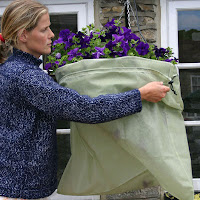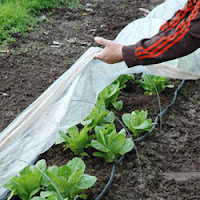Spring lurks while it has not fully arrived according to the
calendar the mild winter here in Western New York has us itching to get
outdoors to start digging in the soil and tending to our gardens. For seed starters, now is the time to plant. Over this past
week, I have started some varieties in my basement under grow lights, along
with the help of a much needed heat
mat for good germination. Here are the plants I like to start from seeds
and plant in my garden:
I started Deep
Purple and Coconut,
and they will be outstanding in combination plantings. These petunias are
wonderful in beds as they will spread 3 to 4 feet across. I add some Worm Power
when transplanting and the results were phenomenal last year. If you are not
using any of the Wave
petunias, I highly recommend that you do.
These dwarf snapdragons are absolutely gorgeous in hanging planters or
containers. Bushy, compact plants will spread to 16 to 18" across, but
only get 6 to 8" tall. These trailing snaps are bright and cheerful…they
make my day.
Although you can directly plant zinnia seeds in the garden, I like to start
them in my basement to get a jump on the season. Magellan
Mix is absolutely the best zinnia for bedding and hedges. Plants grow 12 to
15" tall, and are loaded with large, colorful blooms.
I grow Zahara
Double Fire and Double
Cherry. These two varieties are truly knock-outs in garden beds. The
intense deep orange and cherry red colors are a sight to behold. The plants
will handle extreme weather better than others too.
Primo
Red Tomatoes
This tomato variety has only been in the marketplace for a few years, and
already it is a grower favorite. Modern hybrid tomatoes are not supposed to
have great flavor, compared to older varieties, but not so with Primo Red. It
matures very early, producing large, meaty beefsteak size fruit with a
wonderful tomato flavor. It is my main tomato variety.
I love the bright yellow color of the roma tomato type
fruit, and its eating quality for salads is exceptional. Golden Rave is a
prolific yielder, so a few of these tomato plants go a long way.
Small, flattened round peppers, only 2.5 to 3" across are a true delight.
The flesh is thick and very sweet, and I stuff and bake them for hors d'oeuvres
or will often serve them as a main meal.
In short…these peppers are absolutely delicious.
Gordo
Peppers
I do not understand why more gardeners don't use this pepper variety. It will
yield exceptionally large, flattened elongated peppers with very thick walls.
Its thick flesh and long flattened shape make it ideal for roasting, and
roasted and fried peppers in a tomato sauce are superb. Slice Gordo in half and
stuff it for baking or try its very sweet flesh raw in salads.
I can highly recommend any of the above varieties for your
garden. They are real winners as far as I am concerned.

 Gardeners love using Garden Tunnels to provide a simple way to extend the growing season while protecting plants from frost, wind chill, and garden
pests. These allow you to plant up to two weeks earlier and in tests, this
garden tunnel has been shown to keep growing vegetation up to 25°F warmer than
outside temperatures. Here in Rochester NY, we have used them to grow lettuce into December, even after 12" of snow! Easy
Fleece Tunnels combine wire hoops with row cover material are easy to install
tunnels can even protect tall plants like tomatoes and peppers.
Gardeners love using Garden Tunnels to provide a simple way to extend the growing season while protecting plants from frost, wind chill, and garden
pests. These allow you to plant up to two weeks earlier and in tests, this
garden tunnel has been shown to keep growing vegetation up to 25°F warmer than
outside temperatures. Here in Rochester NY, we have used them to grow lettuce into December, even after 12" of snow! Easy
Fleece Tunnels combine wire hoops with row cover material are easy to install
tunnels can even protect tall plants like tomatoes and peppers.

















